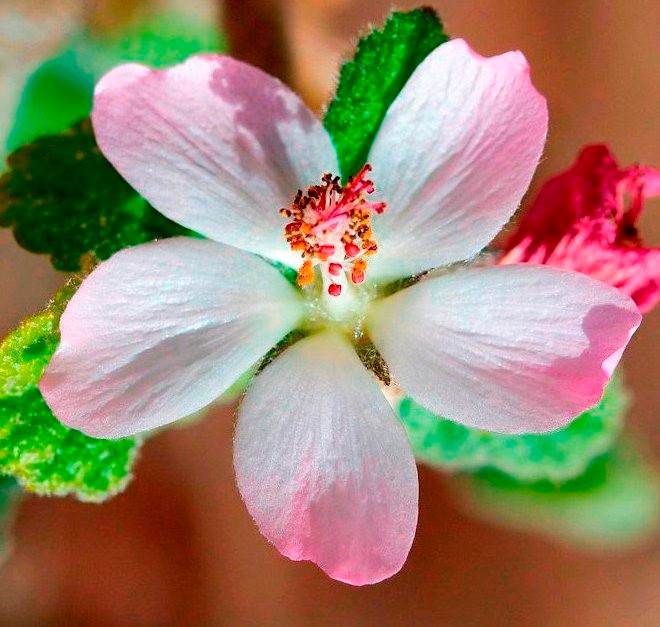San Clemente Island bushmallow
(Malacothamnus clementinus)

Description
Malacothamnus clementinus is a rare species of flowering plant in the mallow family known by the common name San Clemente Island bushmallow. It is endemic to San Clemente Island, one of the Channel Islands of California, where it is known from fewer than ten occurrences in the steep, rocky seaside canyons. The plant became a federally listed endangered species in 1977 when it was limited to a single population nearing extinction due to herbivory by the feral goats which once infested the small island. The goats have since been removed and the plant is recovering well, but many threats still remain, including competition with introduced species of plants, wildfire, erosion, and damage to the landscape by United States Navy bombing exercises. Since the Navy removed goats from the island in the 1990s and started an intensive management program this species has recovered significantly. There are now over 80 known populations on the island consisting of over 1,500 individuals. In the last review of this species, the United States Fish and Wildlife Service recommended downlisting this species due to its recovery and the ongoing management that the Navy has committed to. This is a bushy shrub with a thin, multibranched stem coated in long, fine hairs. It reaches heights between 40 centimeters and one meter. It bears rounded dark green leaves several centimeters long which are divided into sharp lobes. The inflorescence is a spikelike cluster of a few pale pink, lavender, or nearly white flowers with somewhat lance-shaped, hairy petals several millimeters long. It rarely produces fertile seed and it is believed to propagate itself mainly via rhizomes. Malacothamnus (bushmallow) is a genus of shrubs and subshrubs found throughout much of mainland California and on three of the Channel Islands. Outside of California, Malacothamnus is known from the northern half of Baja California, from a disjunct location in central Arizona, and possibly from a historic location that may have been in southern Arizona or adjacent Mexico. Plants of this genus are most commonly found in early-successional, post-burn plant communities. Malacothamnus are currently thought to be most closely related to the Iliamnas of the US interior and the Phymosias of Mexico, Central America, and the Caribbean.
Taxonomic tree:







